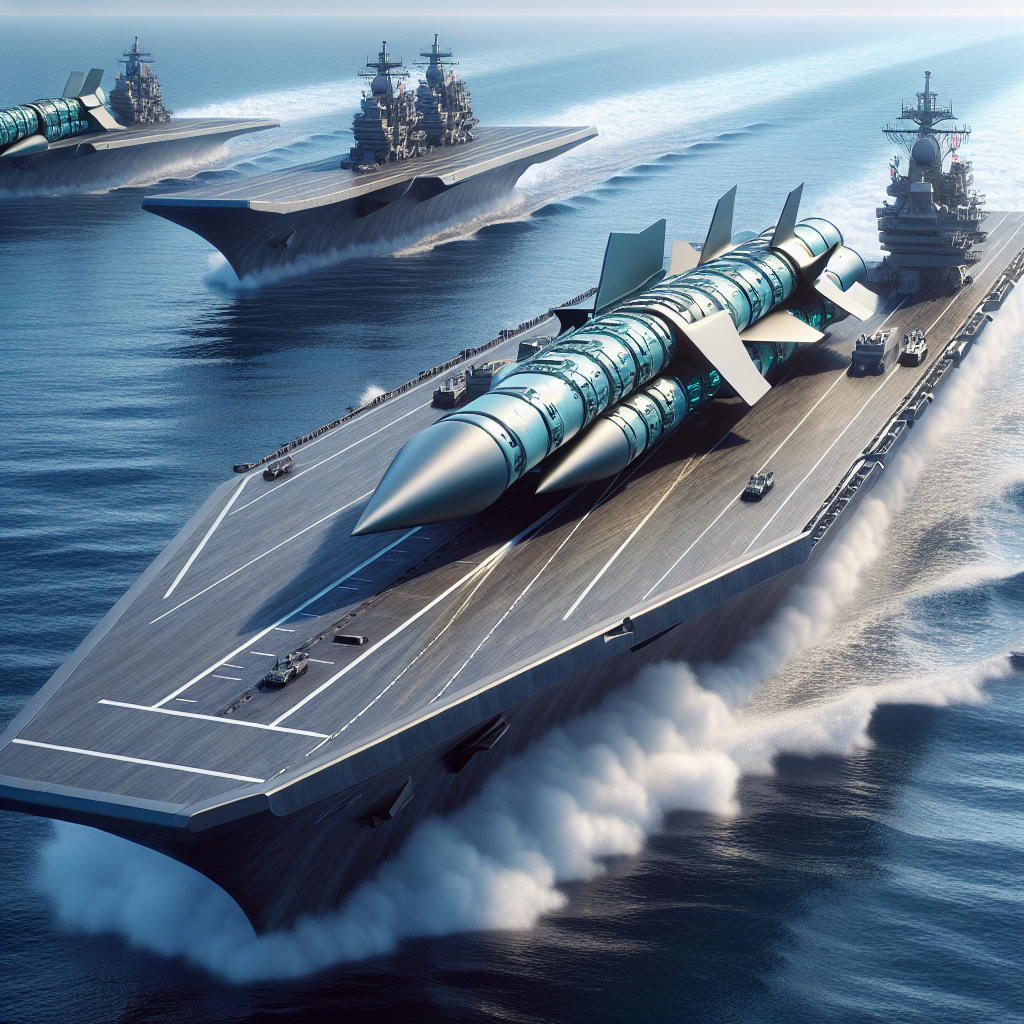In a move that underscores the ongoing global arms race, hypersonic weapons have emerged as a key component of military competition among major world powers. The United States is currently retrofitting its first-ever carrier-based hypersonic weapon on the lead ship of three stealth destroyers, the USS Zumwalt, to enhance the lethality and survivability of this cutting-edge destroyer.
The USS Zumwalt destroyer is the U.S. Navy’s next-generation multi-mission land-attack destroyer and the lead ship of three new-generation multi-mission missile destroyers. Not only is its stealth design futuristic, but its combat capability is incredibly formidable, especially with the addition of hypersonic missile systems.
The three Zumwalt-class destroyers represent the Navy’s most advanced surface combatants in terms of new technologies. These innovations include electric propulsion, angular designs that minimize radar signatures, unconventional wave-piercing hulls, automated fire control and damage control capabilities, as well as composite material deckhouses that conceal radars and other sensors.
According to an Associated Press report on November 30, the USS Zumwalt arrived at the Huntington Ingalls Industries shipyard in Pascagoula, Mississippi in August 2023 and was removed from the water for the complex task of integrating new weapon systems. Workers there installed missile launch tubes to replace the unused dual-gun turret. Once the system is finalized, the USS Zumwalt will provide a platform for rapid and precise strikes from longer distances, enhancing the versatility of naval vessels.
Shipyard spokesperson Kimberly Aguillard stated that the destroyer will be launched this week for the next round of testing and preparations to return to the fleet.
Over the past twenty years, the United States has been developing various types of hypersonic weapons. Hypersonic weapons travel at speeds exceeding Mach 5, five times the speed of sound, making them highly maneuverable and harder to intercept.
The U.S. is developing and planning to deploy a hypersonic weapon system on the USS Zumwalt called the “Conventional Prompt Strike.” This weapon will be launched like a ballistic missile and release a hypersonic glide vehicle, with speeds seven to eight times that of sound, to ultimately strike targets. The weapon system is a joint development by the Navy and the Army. Each Zumwalt-class destroyer will be equipped with four missile launch tubes, each carrying three missiles, providing a total of 12 hypersonic weapons.
It is envisioned that the USS Zumwalt will offer land-attack capabilities through the Advanced Gun System (AGS), which uses rocket-boosted projectiles to pave the way for Marine Corps personnel ashore. However, due to the high cost of these projectiles, the system has been canceled.
The USS Zumwalt, with a cost of $7.5 billion, aims to enhance the practicality of this expensive warship for the Navy.
Successful testing of hypersonic weapons by the U.S. military during the summer indicates ongoing missile development efforts. The Navy hopes to commence testing hypersonic weapon systems on the USS Zumwalt in 2027 or 2028.
Both Russia and China are also conducting research and development in this arena, adding pressure on the U.S. military.
According to a report by The Washington Post last year, leaked documents from former Massachusetts Air National Guard member Jack Teixeira confirmed that China recently tested a medium-range hypersonic weapon named the DF-27.
James Weber, the Chief Director of Hypersonic Projects in the Office of the Assistant Secretary of Defense for Key Technology in the United States, stated that the accelerated development of hypersonic technology in the U.S. is due to its critical importance for national security in terms of “survivability and lethality capabilities.”
“Deploying new capabilities based on hypersonic technology is a top priority for the Department of Defense to maintain and enhance comprehensive deterrence and establish enduring superiority,” he said.
The U.S. Navy describes the USS Zumwalt destroyer as 185 meters long with a displacement of 16,000 tons, making it the largest and most technologically advanced surface vessel in the world. In comparison, the People’s Liberation Army Navy’s Type 055 destroyer is the largest surface vessel currently in service, with a displacement ranging from 12,000 to 13,000 tons.
In September 2022, CNN quoted former U.S. Navy Colonel Carl Schuster as saying, “The emergence of a stealth warship will attract great interest, especially when the Zumwalt is equipped with hypersonic missiles.”
Aside from the lead ship, the USS Zumwalt, the U.S. Navy plans to construct a total of three Zumwalt-class destroyers. The second ship, the USS Michael Monsoor, was commissioned in 2019, while the third ship, the USS Lyndon B. Johnson, has yet to be delivered.
For the U.S. Navy, the Zumwalt-class destroyer program has long been a contentious subject. The vessel’s development process has been rocky and experimental in nature, leading to escalating costs. This is a primary reason why the U.S. Navy currently plans to build only three destroyers of this class.
Additionally, as reported by the AP, the price tag for U.S. military weapon systems is steep. According to data from the U.S. Congressional Budget Office, procuring 300 of these hypersonic weapons and maintaining them over 20 years would cost nearly $18 billion. Critics argue that this approach offers low cost-effectiveness.
Loren Thompson, a seasoned military analyst in Washington D.C., stated, “These missiles are pricier than dozens of tanks and can only deliver a single precise non-nuclear explosion from a great distance. Is it truly worthwhile? In most cases, the cost of these missiles far exceeds the value of any target they could destroy.”
Retired Navy Rear Admiral and CEO of the Center for Strategic and Budgetary Assessments, former Carrier Strike Group Commander Raymond A. Spicer, noted that these hypersonic weapons enable U.S. Navy ships to attack enemies from thousands of kilometers away, surpassing the range of most enemy weapons with no effective defense capabilities.
Spicer emphasized that if targets cannot be hit, lower-cost conventional missiles lose their value; he added that the U.S. military has no alternative but to pursue acquiring these missiles.
“Our adversaries possess these missiles. We never want to be outmatched,” he said.

